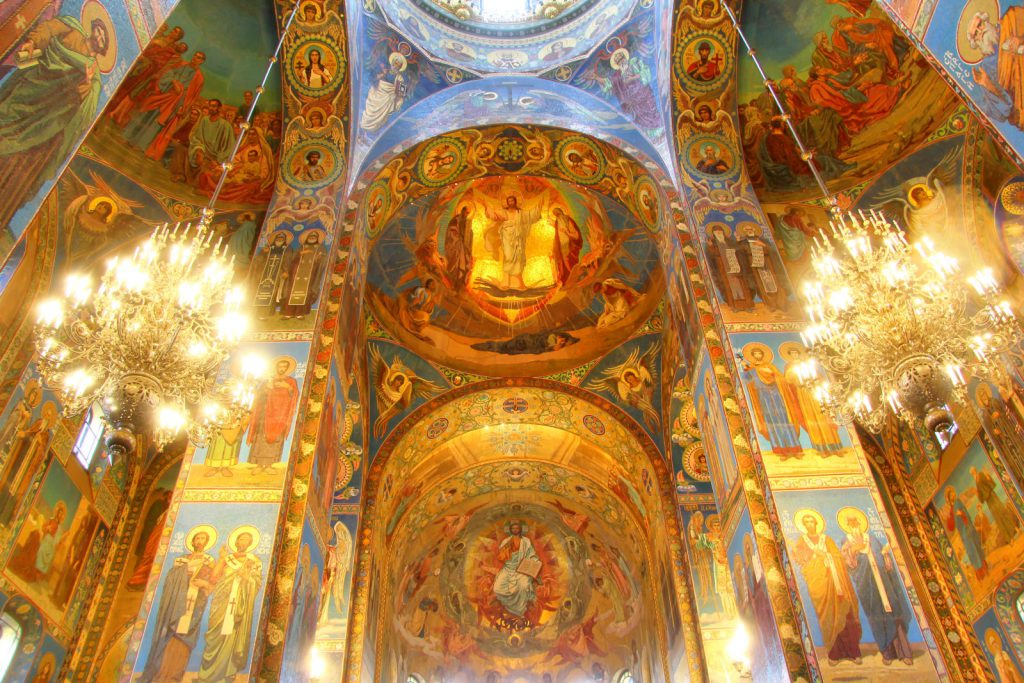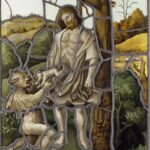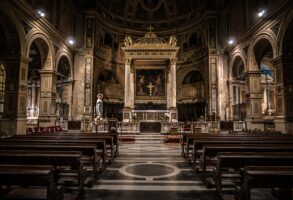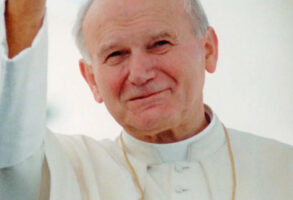
Published April 5, 2015
You’ve noticed it if you’ve kept a death-watch by the bedside of a loved one; emergency medics, physicians, and clergy see it all the time, even on the battlefield: the human body fights against death, resisting the inevitable to the end. Viewed through the lens of biblical faith, this innate, physical resistance to death is a trace of what theologians call “original innocence,” the condition of Adam and Eve before the Fall: before sin and death entered the story. Death is unnatural, in the sense that the Creator did not intend it “in the beginning.” Because “he is not God of the dead but of the living; for all live to him” [Luke 20.38].
Easter, which is properly celebrated for a full week, or “octave,” is an annual invitation to ponder and pray over just what the Resurrection wrought. Reflecting on that question in its most comprehensive sense, it’s good to keep that natural resistance-to-death in mind, for it sheds light on an important dimension of Easter faith. And that is the Church’s conviction, which we can see being formed in some of St. Paul’s later letters, that the Resurrection wrought a great change in the order of nature as well as in the order of history — a great change in the structure of reality itself, as well as in the trajectory of the human drama.
In the middle volume of his triptych, Jesus of Nazareth, Pope Benedict XVI tried to describe those Resurrection-changes in history and nature (which are, of course, ultimately indescribable) like this:
Christ’s Resurrection . . . is a historical event that nevertheless bursts open the dimensions of history and transcends it. Perhaps we may draw upon analogical language here . . . [and think of] the Resurrection as something akin to a radical “evolutionary leap,” in which a new dimension of life emerges, a new dimension of human existence.
Indeed, matter itself is remolded into a new type of reality. The man Jesus, complete with his body, now belongs to the sphere of the divine and eternal. From now on, as Tertullian once said, “spirit and blood” have a place within God. . . . Even if man by his nature is created for immortality, it is only now that the place exists in which his immortal soul can find its “space,” its “bodiliness,” in which immortality takes on its meaning as communion with God and with the whole of reconciled mankind. This is what is meant by those passages in Saint Paul’s prison letters (cf. Colossians 1.12–23 and Ephesians 1. 3–23) that speak of the cosmic body of Christ, indicating thereby that Christ’s transformed body is also the place where men enter into communion with God and with one another and are therefore able to live definitively in the fullness of indestructible life. . . .
[Thus] Jesus’s Resurrection was not just about some deceased individual coming back to life at a certain point. . . . [An] ontological leap occurred, one that touches being as such, opening up a dimension that affects us all, creating for all of us a new space of life, a new space of being in union with God.
Keeping in mind the magnitude of the change wrought by the Resurrection — a divine action in history and nature that changed history and nature in a radical way, opening new possibilities of life beyond the reach of death — we can get a deeper insight into those readings from the four Gospels that the Church uses on Easter Sunday and throughout Easter Week — readings in which the disciples don’t get it, time after time after time, in their encounters with the Risen One.
Take, for example, one of the literary gems of the New Testament: the account, in Luke 24.13–44, of the two disciples who meet the Risen Lord on Easter on the road to Emmaus, fail to recognize him at first, then come to know him in the breaking of bread. The two then rush back to Jerusalem where they share their experience with other friends of Jesus. Both the Emmaus disciples and the disciples in Jerusalem (who have found the empty tomb and have heard the angel’s proclamation of the Resurrection) believe that Jesus has been raised; they accept the testimony of their own eyes, and of witnesses. But they still cannot grasp what this “being raised” means. So when the Risen One appears among them, their first reaction is to think that this is a “spirit,” a ghost.
The Risen Lord chastises them mildly, pointing out that he has “flesh and bones” that a “spirit” would not have — and still they don’t get it, although St. Luke tells us that they “disbelieved for joy:” that is, this is too good to be true. So the Lord asks for something to eat; they give him broiled fish, which he eats before them. Then, as he had done on the Emmaus road, he shows them from Scripture that the Anointed One of God had to suffer; that he then had to rise from the dead to a new form of life; and that repentance should be preached in his name “to all nations, beginning from Jerusalem.” They are, he concludes, “witnesses to these things” — which is to say, they have a mission, for which they will be equipped in due course by “power from on high,” in the gift of the Holy Spirit.
This striking pattern — incomprehension followed by divine instruction and example, and then by a gradual emerging of Easter faith in its fullness — is central to the Church’s liturgy throughout Easter Week. And in this age of skepticism, it is certainly striking that the Church made its own dullness and initial lack of understanding a central part of its preaching of the Resurrection — which is not precisely what today’s marketing gurus would recommend. (“Hi. I’m Steve Jobs and this is an iPhone. I’m not sure what it’ll do, but we’ll see.”) Why was this slowness to grasp the meaning of the New Life remembered? Why was it enshrined in the holy books of the New Covenant?
Benedict XVI, once again, suggests an answer. It was done, he wrote, because it accurately reflects the ways of God with humanity. Why didn’t God do things the way we would have done them — smiting the enemies of God with power, coming down from the Cross, revealing the truth of the world and of history to the powerful and influential, rather than to a small band of illiterates, peasants, and pious women? Because, as Benedict reminds us, God’s ways are not our ways:
It is part of the mystery of God that he acts so gently, that he gradually builds up his history within the great history of mankind; that he becomes man and so can be overlooked by his contemporaries and by the powers that shape history; that he suffers and dies and that, having risen again, he chooses to come to mankind only through the faith of the disciples to whom he reveals himself; that he continues to knock gently on the doors of our hearts and slowly opens out eyes if we open our doors to him.
And yet — is this not the truly divine way? Not to overwhelm with external power, but to give freedom, to offer and elicit love. And if we really think about it, is it not what seems so small that is truly great? Does not a ray of light issue from Jesus, growing brighter across the centuries, that could not come from any mere man and through which the light of God truly shines into the world? Could the apostolic preaching have found faith and build up a worldwide community unless the power of truth had been at work within it?
Because of Easter, nature and history, the material self and the soul, the world and the cosmos have all been transformed: they have been brought into communion with God, who is now shown to be Creator and Redeemer, and who will soon be known, at Pentecost, as Sanctifier. Because of that, we can see that history is, finally, His-story, God’s story, and that God has acted to put our history within His-story back on track. Because of Easter, we can take heart at moments when history seems careening off the rails, as it does in April 2015. Because of Easter, we can see (if more dimly than he saw) what the visionary John saw on Patmos, which is where all of this is finally heading:
Then I saw a new heaven and a new earth; for the first heaven and the first earth had passed away, and the sea was no more. And I saw the holy city, new Jerusalem, coming down out of heaven from God, prepared as a bride adorned for her husband; and I heard a great voice from the throne saying, “Behold, the dwelling of God is with men. He will dwell with them, and they shall be his people, and God himself will be with them; he will wipe away every tear from their eyes, and death shall be no more, neither shall there be mourning nor crying nor pain any more, for the former things have passed away.
And he who sat upon the throne said, “Behold, I make all things new.” [Revelation 21. 1–5a]
He is risen. Be not afraid.
— George Weigel is Distinguished Senior Fellow of Washington’s Ethics and Public Policy Center, where he holds the William E. Simon Chair in Catholic Studies. This essay is adapted from Roman Pilgrimage: The Station Churches,which he co-authored with Elizabeth Lev and Stephen Weigel.








